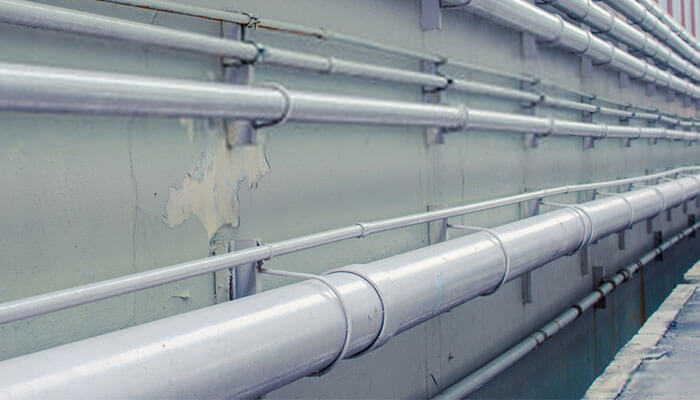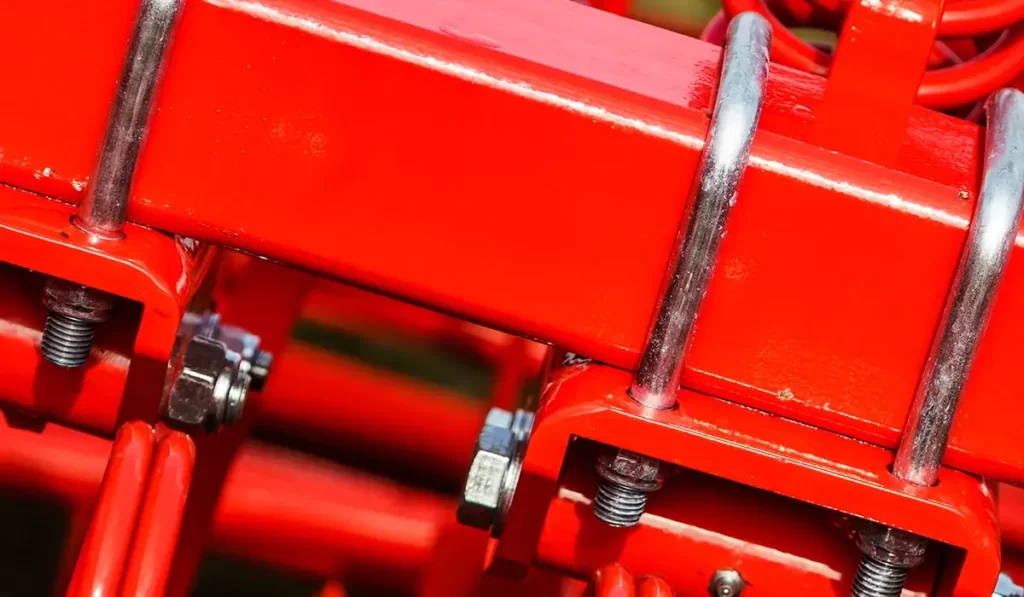Last Updated on August 14, 2023 By Emma W. Thomas
U-bolts are fasteners shaped like the letter “U,” with threaded ends. They’re used to secure pipes, cables, and other objects to surfaces. Common in construction and automotive industries, U-bolts offer stability and prevent movement. They come in various sizes to accommodate different diameters, such as 1/4 inch to 4 inches.
What Are U Bolts Used For?
U-Bolts are a common fixture in various industries and applications. They are termed ‘U-Bolts’ due to their U-shaped design. These sturdy bolts, which typically contain a flat metal base or plate, are used in a range of different scenarios.
1. Automotive Use
U-bolts are widely used in the automotive industry due to their versatility and strength. They’re often used in the suspension systems of vehicles to connect components and provide stability. This helps to ensure the vehicle’s safety and performance.
2. Industrial Applications
In industrial settings, U-bolts are frequently used in piping systems. They can secure pipes to each other or to structures, ensuring secure and stable piping configurations. This is especially important in systems where high pressure or temperature variations are common.
3. Construction Sector
The construction industry makes extensive use of U-bolts for their robustness and dependability. They are used to fasten iron or steel beams onto concrete foundations, ensuring structural stability.
4. Marine Applications
U-bolts play a crucial role in marine applications, particularly in the construction and maintenance of boats and ships. They’re used to attach cables or ropes, secure deck hardware, or fasten various other types of marine equipment.
5. Telecommunication Industry
In the telecom industry, U-bolts are used in antenna installations to secure them onto communications towers. This provides a durable and reliable connection that can withstand various weather conditions.
6. Home Improvement Projects
DIY enthusiasts and homeowners often use U-bolts in home improvement projects, including building shelves, securing heavy objects, or mounting equipment.
7. Agricultural Use
In the agricultural sector, U-bolts play a significant role in securing various equipment in machinery, making them essential for the efficient operation of farm implements.
In conclusion, the U-bolt’s shape makes it highly versatile for securing, supporting, and stabilizing components across multiple applications. As a fundamental hardware tool, it is an irreplaceable part of an array of industries from automotive to construction, telecommunications, marine applications, and many more.
When Can One Use A U-Bolt?

U-bolts have a wide range of uses, but they are mostly used for piping solutions. They are used in many ways including:
1. As A Guide And Restraint
U-bolts can be used as a pipe or tube restraint to prevent the piping from banging or moving into structures and damaging them. When pipes are restrained by pinning or holding down, they can be damaged where pressure is most focused.
U-bolts are used as a guide to control pipe movements without compressing vibrations into a single point. When used in this way, the devices help the tubes to move through the pipe restraint or axially without bouncing up and down.
2. For Pipe Elevation
One of the major uses of U-bolts is for hanging tubes. Inappropriate setting up of your pipes can lead to falling objects and corrosion due to gravity. You can install a U-bolt to a ceiling, beam, or overhead structure to secure elevated pipes and limit vibrations.
3. For Shipping
During shipping, pipes can hop up and down, leading to breakage. You can use U-bolts to fasten and restrain pipes when shipping. The bolts will add a buffer between the pipes and other metals.
What Are U-Bolts Made Of?
U-bolts come in various materials, but they are generally made of durable, non-corrosive metal. Some common materials include 316-stainless steel, plain carbon steel, and 304-stainless steel. To prevent corrosion and other damages, manufacturers may add protective coatings such as;
1. Zinc-Plating
Zinc-plating is the process of using electrodes to post Zinc onto iron parts or mild steel. The coating offers excellent resistance to corrosion, and it also acts as a sacrificial coat. Zinc corrodes over time gradually, thus protecting the steel underneath.
The thin zinc layer works well for indoor applications.
2. Thermoplastic Coating
A thermoplastic coating on the U-bolt adds a buffer between metals. Contact between metals could lead to galvanic corrosion as well as broken structures. This type of coating adds a neutral layer that protects the pipe and the restraint.
It allows the piping to glide through the U-bolt without friction while at the same time cradling the pipe. This coating minimizes the risk of broken restraints, support structures, as well as pipes.
3. Hot-Dip Galvanization
This process adds a deeper Zinc coat to steel, where the U-bolt is dunked in molten Zinc to create a bond. The coating is perfect for corrosive environments, such as salt and high humidity in the air.
4. Fluoropolymer Coating (Xylan, PTFE, or Teflon)
A fluoropolymer coating is a combination of corrosion-resistant materials. The coating is capable of holding up in extreme cold and hot weather without cracking.
How U-Bolt Sizes Are Measured
U-bolts are measured in the same manner regardless of the bend type. U-bolt size is given as Diameter (A) x Distance between legs (B) x length of the leg (C). Bend type is also specified in measurements either as square, round, or semi-round.
U-bolts are usually matched with the size of pipes. They are meant to fasten, although the sizing may vary. Their sizes range between 1/4-inch to 1-inch in rod size and can hold tubes as wide as 30 inches.
Installing U-Bolts
U-bolts can either be functional or ineffective, depending on their installation. Here’s how to install these tools properly;
- Detach the nuts from both ends of the U-bolt
- Position the U-bolt around the tube you are fixing and thread its ends through the openings in your support structure or beam
- Screw the nuts on both outer ends of the U-bolt
- Use your hands to tighten the nuts that are nearer the support beam
- Fasten the outer nuts on both ends of the U-bolt
- Tighten all nuts using a wrench or a power tool
Ensure that you measure the spacing if using the U-bolts as a guide. Space must fit its specifications before you tighten the nuts.
Types Of U-Bolts
There are mainly two types of U-bolts, namely middle bandage and square U-bolts. Both types are used for fastening cross arms, but there are, however, smaller ones used for connecting tension clamps and ball sockets on transmission lines.
1. Square U-Bolts
A square U-bolt has a 90-degree angle at each bend and is also referred to as a square bend U-bolt. This type of bolt is common in countries such as Chile and Kenya.
2. Middle Bandage U-Bolt
This type of U-bolt has a bandage at the middle, normally between the threaded ends that help minimize friction between the installed device and the U-clamps. A bandage can also be present on a square U-bolt depending on its application.
Major Parts Of A U-Bolt
U-bolts are simple U-shaped devices with a bolt and two nuts on each end. Some of these tools have washers that help in tightening connections and holding nuts in place if the structure is shaky.
Washers are thin disk-shaped plates with holes in the middle that are made of metal or plastic. They work well in the distribution of weight on threaded fasteners. They may also function as spacers, springs, wear pads, preloading indication devices, or locking devices.
Nuts have threaded interiors, and they often work alongside the bolt to hold together due to friction with threads. U-bolts also have elastic deformation, compression, and stretching, which are forces that help keep them together.
What To Look For In U-Bolts

Besides looking at the material making U-bolts, several other factors will determine their efficiency. Here are a few of them;
1. Thickness
The type of cross arm a U-bolt will hold determines its thickness. Thick U-bolts are ideal for heavy materials as they can carry their weight. You will find U-bolts in different diameters to help you choose the most suitable for your use.
2. Tensile Strength
The material used in making a U-bolt and the diameter of the element is very vital in determining its tensile strength. The manufacturing process will also influence the power; for example, hot forging produces stronger U-bolts, while cold-bending will give fragile devices that are not proper for use.
References:
https://www.appmfg.com/blog/u-bolt-101-the-simple-facts
https://whatispiping.com/u-bolt/
Emma is a graduate of Domestic Science or Family and Consumer Sciences (Home Economics) from the University of Wisconsin. She has 7 years of experience Working with the strategic section of BestBuy and now writing full-time for Homeeon.
From Managing the Home, Interiors, Cleaning, and Exteriors to Gardening and everything about Making A Home Liveable – is her passion and this Homeeon is the result of this.
Emma loves decorating her home with the best stuff found online. She cares about quality over anything and writes reviews about them here in Homeeon. Get in touch with her over Pinterest.
Keep reading her blogs.
